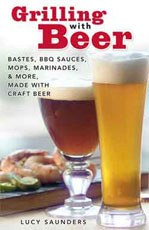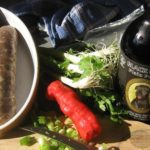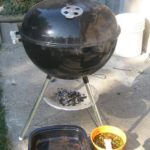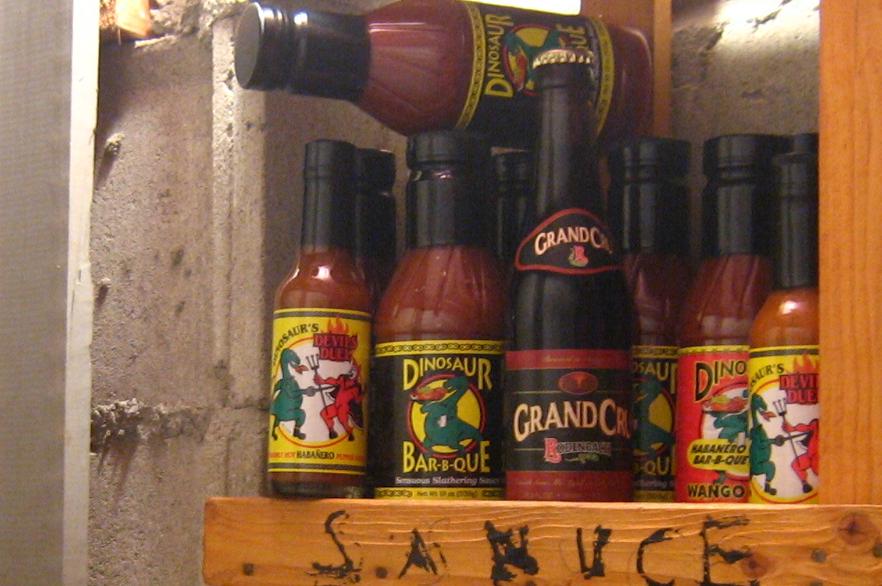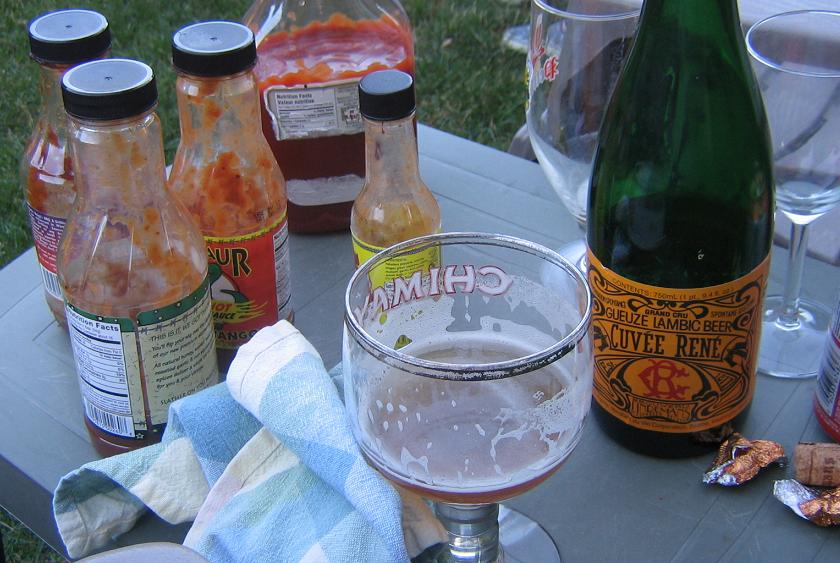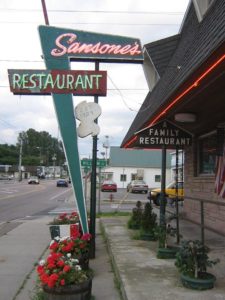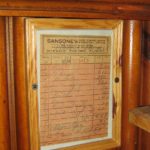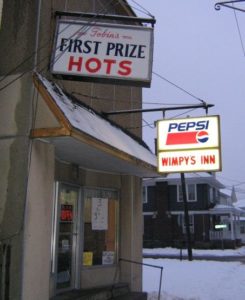 I have been a bad beer blogger. I just got a copy of Garrett Oliver’s The Brewmaster’s Table. One baaad beer blogger. And not bad like ManRam says either. The fact is, I thought it was really more like The Brewmaster’s “Kitchen” and had expected it was more like a recipe book. Not that there is anything wrong with that. Lucy Saunders obviously does a great job at telling us how to cook with beer. But I didn’t feel drawn to another similar one.
I have been a bad beer blogger. I just got a copy of Garrett Oliver’s The Brewmaster’s Table. One baaad beer blogger. And not bad like ManRam says either. The fact is, I thought it was really more like The Brewmaster’s “Kitchen” and had expected it was more like a recipe book. Not that there is anything wrong with that. Lucy Saunders obviously does a great job at telling us how to cook with beer. But I didn’t feel drawn to another similar one.
How wrong I was. How shallow the uninquisitive mind. This is a great and valuable text. No wonder everyone recommends it. Let me be a guest late to this party. It is well laid out with sections of the traditions of the great brewing nations, a discussion of the major styles found in each, examples and their properties as well as a description of the foods that go with each. It is the table because it is what a craft brewer would (and does) place place before himself in terms of food and drink. Good. Handy.
For present purposes, though, the book provides me with one thing that no one else in my meager span of attention had mention. Many traditional sour beers – and especially the sourest – were not intended to be consumed without sweetening. See, this is what has always bugged me about lambics and gueuze. We do the medievals and thems that followed a disservice when we say that the pure raw lip puckering drink is what they would have consumed. First of all, most of them would have consumed mostly unhopped ales bittered with gruit made and swallowed within a few days. Then, few would have had access to the resources required to buy aged ale, including any which might have been aged for souring. Additionally, those that were aged were likely aged within the annual cycle as is most every other agricultural product. These general observations seem both logical and consistent with the histories by Cornell, Haydon, Hornsey and Unger. Plus I have another pet theory – no one drinks extremely sour things without a certain purpose and sour in beer has long standing recognition as a failing in brewing.
But I have gone over that before in these sour beer studies. What is new is the mention made of one tradition of Belgian lambic drinkers – as opposed to its brewers – described in The Brewmaster’s Table. At page 71, comparing dry lambics to their sweet siblings, Oliver states:
Lambic afficiandos are given to frothing at the mouth when the latter versions are mentioned, but I feel both types have their place. Don’t forget that some people always sweetened their beers, when they could afford it – sugar was once a luxury.
Sadly, I can not longer wallow in vindication dancing the merry jig as these studies have given me both respect and a taste for the sour beers of Belgium. I still find Cantillon too stark but that is like saying Guinness is too dark. It simply is. And sour for me now holds an interesting and worthy place in the beery pantheon.
But, still, there is comfort knowing that now and likely in the past people did not suffer austere acidity except as a mild fetish or a consequence of poverty. Two traditional styles, neither of which I have tried as they are quite localized, confirm how sweetening may have been undertaken, Berliner weisse and faro. Berliner weisse is a German sour brew uniformly taken with a sweet fruity syrup and preserving sweets is entirely reasonable as a form of storage though the centuries. I would expect that facing another pitcher of dry lambic before him on the table, your average 16th centurian may well have had a spoon in the jelly or honey jar next to it. In addition to Berliner weisse, Belgian faro is described as a “low-alcohol, slightly sweet table beer made from lambic to which brown sugar has been added” – taken on draft, again, it is a reasonable approach to making a rather restrictive brew more approachable for the many.
Point? I am relieved to find this confirmation from somewhere that lambics were sweetened by drinkers in much the same way as the old guys shook the salt over their draft in the Nova Scotian taverns of my youth. People, as we learned from Depeche Mode, are people. Other point? Buy The Brewmaster’s Table.


